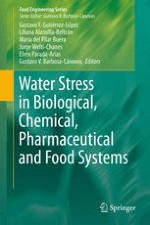2015 | OriginalPaper | Buchkapitel
Defining High and Low Spray Drying Temperatures for Aloe vera Gel
verfasst von : I. N. García-Luna, J. Porras-Saavedra, F. Vergara-Balderas, J. Welti-Chanes, G. F. Gutiérrez-López, L. Alamilla-Beltrán
Erschienen in: Water Stress in Biological, Chemical, Pharmaceutical and Food Systems
Verlag: Springer New York
Aktivieren Sie unsere intelligente Suche, um passende Fachinhalte oder Patente zu finden.
Wählen Sie Textabschnitte aus um mit Künstlicher Intelligenz passenden Patente zu finden. powered by
Markieren Sie Textabschnitte, um KI-gestützt weitere passende Inhalte zu finden. powered by
